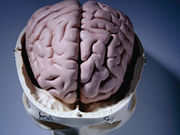Machine-learning platform uses entire shape of cerebral blood flow velocity waveforms
FRIDAY, April 15, 2016 (HealthDay News) — A machine-learning platform that uses the entire shape of cerebral blood flow velocity (CBFV) waveforms acquired via transcranial Doppler (TCD) imaging is more accurate for diagnosing concussion, according to a study presented at the annual meeting of the American Academy of Neurology, held from April 15 to 21 in Vancouver, Canada.
Robert Hamilton, Ph.D., from Neural Analytics in Los Angeles, and colleagues examined the accuracy of a platform that uses the entire shape of the CBFV waveform in a study involving two groups: a post-injury group of 66 high school contact sports athletes and an age-matched control group (169 high school athletes). Measurements were taken within 12 days of injury; conventional TCD ultrasound measures were compared to morphological analysis performed by the machine-learning platform.
The researchers found that concussed and healthy groups could be differentiated with an area under the receiver operating curve (AUC) of 83 percent (71 and 83 percent sensitivity and specificity, respectively). Lower AUCs were seen for mean velocity, pulsatility index, and cerebrovascular reactivity (55, 53, and 60 percent, respectively).
“This research suggests that this advanced form of ultrasound may provide a more accurate diagnosis of concussion,” Hamilton said in a statement. “While more research is needed, the hope is such a tool could one day be used on the sidelines to help determine more quickly whether an athlete needs further testing.”
Copyright © 2016 HealthDay. All rights reserved.








